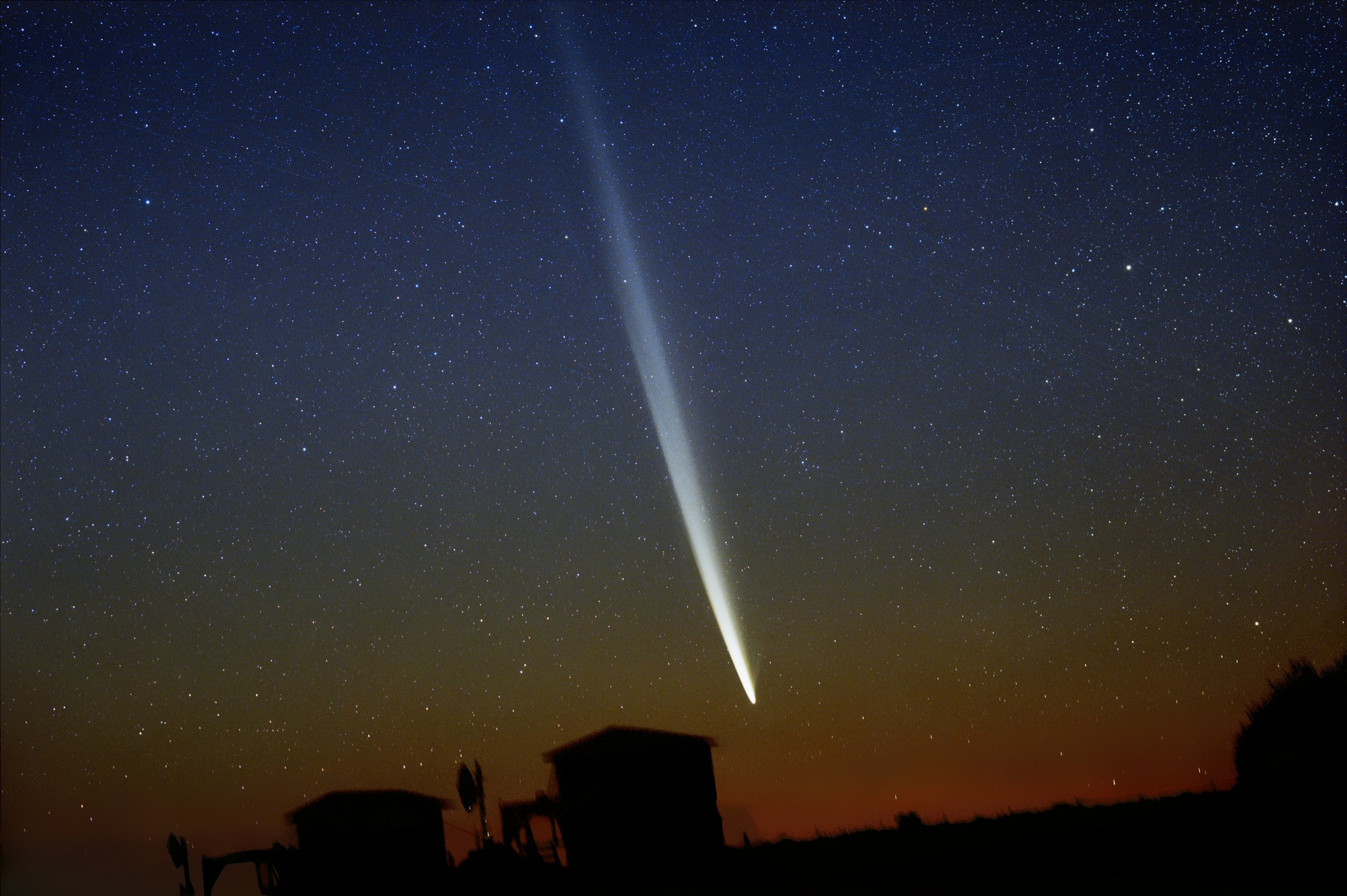
A cosmic CO2 Discovery has astronomers buzzing after NASA telescopes detected a substantial carbon dioxide fog surrounding the interstellar comet 3I/ATLAS. This groundbreaking finding, announced in late August and early September 2025, provides an unprecedented opportunity to study material originating from beyond our solar system and is challenging existing assumptions about the composition of interstellar objects.

Interstellar Visitor Unveiled
The comet, designated 3I/ATLAS (also known as C/2025 N1 ATLAS), was first spotted on July 1, 2025, by the ground-based ATLAS (Asteroid Terrestrial-impact Last Alert System) survey telescope in Chile. Its interstellar nature was quickly confirmed by its hyperbolic trajectory, indicating an origin outside our solar system. Now, thanks to advanced observations from NASA’s space-based observatories, scientists are gaining invaluable insights into its composition and history.
Key Players in the Discovery
This significant discovery involves multiple contributors and cutting-edge technology. NASA’s SPHEREx (Spectro-Photometer for the History of the Universe, Epoch of Reionization, and Ices Explorer) space telescope played a crucial role in identifying the CO2. Carey Lisse, a Johns Hopkins University astronomer on the SPHEREx science team, is among the key scientists involved in analyzing the data. The James Webb Space Telescope (JWST) further confirmed the presence of the CO2-rich coma. Martin Cordiner of NASA’s Goddard Space Flight Center led a study based on the JWST findings.
Carbon Dioxide Fog: A Detailed Look
The observations revealed an abundant cloud of carbon dioxide gas, effectively a “fog” or “coma,” enveloping comet 3I/ATLAS. SPHEREx detected a significant amount of CO2 gas in the comet’s fuzzy coma, along with water ice in its nucleus. The James Webb Space Telescope corroborated these findings, reporting one of the highest carbon dioxide-to-water ratios ever observed in a comet. The CO2 coma extends at least 348,000 kilometers from the comet’s nucleus, showcasing the scale of this phenomenon.
Timeline of Observations
The discovery unfolded over a relatively short period. Following its initial detection on July 1, 2025, SPHEREx conducted observations in August 2025, with some reports specifying the period between August 8 and 12. The James Webb Space Telescope initiated its observations on August 6, 2025. News of these findings rapidly disseminated throughout the scientific community in late August and early September 2025.
Journey Through Our Solar System
Comet 3I/ATLAS is currently traversing our solar system along a hyperbolic path. While the observations were made by space-based observatories and a ground-based telescope in Chile, the comet itself is on a course that will take it near both the Sun and Earth. Perihelion, its closest approach to the Sun, is expected in late October 2025, at a distance roughly equivalent to Mars’s orbit. The comet’s closest approach to Earth is anticipated on December 19, 2025, at a distance of 168 million miles (269 million kilometers).
Unraveling the Mystery of its Origin
The detection of a prominent carbon dioxide fog is significant because it provides a window into the chemical composition of objects from other star systems. This allows scientists to compare comets from distant stellar nurseries with those formed in our own solar system. The unique chemical profile of 3I/ATLAS—rich in CO2 and water, but low in carbon monoxide—suggests the comet underwent significant “thermal processing,” as reported by Universe Today, implying it was “well baked and boiled” before ejection from its parent star system. This challenges assumptions, as 3I/ATLAS exhibits similarities to familiar comets. SPHEREx’s ability to directly detect CO2 from above the atmosphere is valuable, as Earth’s atmosphere blocks many of carbon dioxide’s infrared signatures. The comet’s composition could provide clues about its birthplace, potentially within the Milky Way’s older, metal-poor thick disk.
Impact and Future Research
The discovery has spurred a global scientific effort to study 3I/ATLAS before it leaves our solar system. Observatories, including the Hubble Space Telescope, are confirming its composition and behavior. The European Space Agency (ESA) is preparing its Mars orbiters, Mars Express and the ExoMars Trace Gas Orbiter, to observe the comet during its closest approach to Mars in October 2025, offering a unique perspective. According to Space.com, researchers are exploring the possibility of other spacecraft conducting close-up investigations. This research is expected to fuel discoveries and potentially reshape our understanding of planetary system formation. Furthermore, as reported by The Economic Times, the unusual characteristics of 3I/ATLAS have spurred debate, with Harvard scientist Avi Loeb speculating about the possibility of it being an alien probe due to its trajectory and composition.
Conclusion
The detection of a substantial carbon dioxide fog surrounding interstellar comet 3I/ATLAS marks a significant milestone in our understanding of objects originating from beyond our solar system. Through the combined efforts of NASA’s SPHEREx and James Webb Space Telescopes, scientists are gaining unprecedented insights into the composition, origin, and thermal history of this unique celestial visitor, paving the way for a deeper comprehension of planetary system formation throughout the galaxy.

